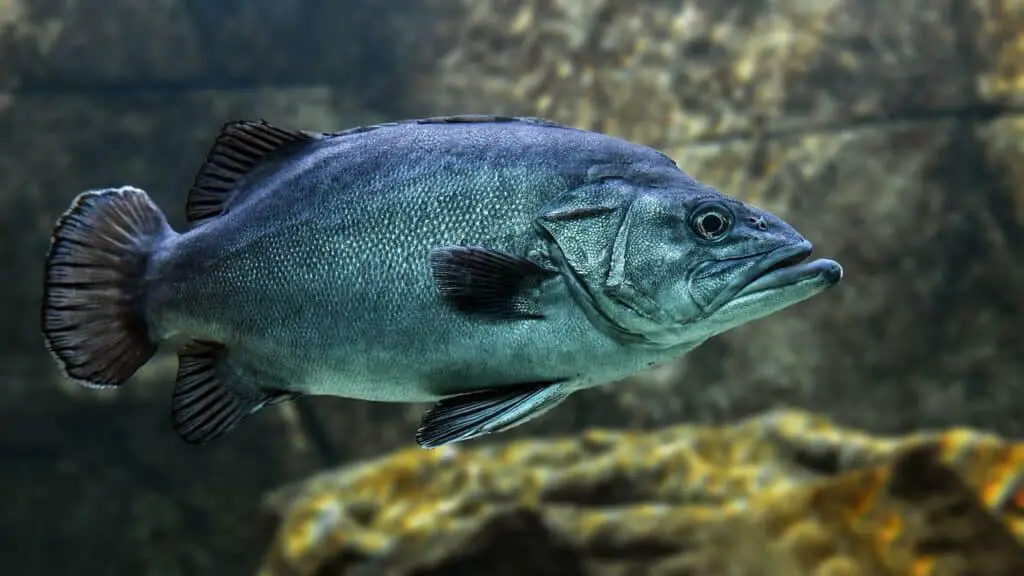Dogs are carnivores and the mere sight of fish meat makes them drool.
As a dog owner, it’s difficult to hold onto that piece of salmon when your dog is salivating.
Slip in a few times but not always.
Although most dog foods have fish, too much is not good for your furry friend.
So can dogs eat fish?
Yes.
Dogs can eat fish.
Seafood is a healthy diet for your canine friend, provided it’s properly deboned, cooked without additional oils and seasonings, and it’s not a species prone to high levels of mercury like tuna.
Moderation is key–once or twice a week for adult dogs is okay whole pups should stick to specialized puppy diets for the first few months.
Before deciding if fish is safe for your dog, first understand the risks involved, the health benefits, and the safest options to feed them.
This article elaborates on all that.

Types of fish to feed your dogs
The most common fish used in commercial dog food are either finfish or shellfish.
Although they are safe for your canine friend, there are certain ways to clean, prepare and cook them.
Watch out for bones, shells, crustacean heads, and feet, as they can damage your dog’s digestive system.
Buy fish with lower mercury levels to prevent potential toxicity.
- Shellfish- Mollusks, shrimp, crab, oyster, lobster, and scallops fall under this group. Feed your dog shellfish in moderation to avoid an allergic reaction.
- Finfish – includes salmon, cod, mackerel, sardines, and other fish with fins. These fish are full of nutrients, healthy fatty oils, and supplements. Flounder, for instance, is full of protein good for your furry friend.
Fish to avoid feeding your dog
Long-lived fish species like tuna and swordfish collect a significant amount of heavy metals like mercury which is harmful to your dog.
Never feed your dog raw fish.
Keep in mind that seafood prepared for humans is a no to dogs.
Moderation is key when introducing fish into your dog’s diet–check the reaction and act accordingly since most canines are allergic to mercury.
What you should know when preparing fish for your dog
- Ensure the fish is fresh, cleaned, deboned, thoroughly cooked, and unseasoned. Completely remove legs, shells, and tails in shellfish before serving it to your furry friend. Remember to remove scales too.
- Properly cook the fish before serving and avoid seasoning. Use unseasoned canned varieties, mostly those stored in water instead of oils.
- Whether grilling, broiling, or steaming, just ensure it thoroughly cooked the fish. Avoid feeding your dog with fried fish–the oils can easily upset their intestines and stomachs.
- Raw wild-caught salmon has parasites that can be fatal to your dog–cook well. Raw clams and oysters have many bacteria, viruses, and algae that easily sicken your dog.
- Boneless fillets make great treats for dogs and are full of proteins and essential oils.
Can dogs eat raw fish?
No.
Dogs should not consume raw seafood–even those regarded as safe to canines.
Each fish meal should be properly deboned, cleaned, and cooked before serving.
Raw fish carries bacteria (Salmonella, Listeria) and parasites harmful to your furry friend if consumed.
In addition, raw fish contains the enzyme thiaminase which inactivates thiamin (Vitamin B1) in your dog’s body, but cooking the fish properly destroys thiaminase solving the problem.
What to do when a dog ingests raw food

How much fish is enough for my dog?
Too much of anything is a problem.
If you’re introducing fish as a staple diet for your fur friend, then once a week in small amounts.
But first, get the right type of fish with low levels of mercury to prevent a build-up over time that will be fatal.
Ideally, introduce seafood to dogs as occasional treats.
Plain, steamed, grilled, or cooked fish is okay when served in moderation.
Too much fish can cause weight gain, especially if it’s a regular diet for your dog–enquire from a vet about the appropriate serving size.
Avoid feeding pups fish; their first months should consist of a specialized puppy diet.
The 10 percent rule for treats should guide you on how much to feed your dog.
Benefits of seafood to your dogs
Seafood has great benefits for humans and dogs as well.
When prepared properly, it’s a safe addition to your dog’s balanced diet, supplement, and nutritional value.
The benefits include;
- Great source of Omega-3 fatty acids
- Healthier skin and coat
- Proper neural development
- Reduced inflammation
- High-quality protein meat
- Hig levels of healthy fats, minerals, and vitamins
- Different flavors to suit various tastebuds
Risks of feeding seafood to your dogs
When introducing seafood to your dog’s diet, familiarize yourself with the associated risks and know how to prevent them.
Most risks are avoided by properly cooking the fish and selecting the right type to feed your furry friend.
Some of the risks are;
- Thaminase and Vitamin B1 make it hard for dogs to digest fish
- Canned fish contain preservatives harmful to dogs
- Increased risk for bacteria like salmonella and listeria
- High sodium concentration is a threat to dogs
- Fish contain high pollutants, toxins, and heavy metals like mercury.
Symptoms of mercury poisoning in a dog
- Loss of coordination and blindness (not treated)
- Increased anxiety
- Diarrhea
- Blood vomits
- Kidney damage
Frequently asked questions (FAQs)
Is breaded seafood good for my dog?
No. Processed fish is bad for your furry friend–ita only acceptable for human consumption.
It contains high-calorie content, and the preparation method can cause digestive problems in your dog.
So, why risk?
Stick to fresh varieties with less greasy coatings.
Dont slip fish sticks to your pups.
Can dogs eat canned fish?
Yes.
Canned fish is packed with healthy proteins that make a great snack for your furry best friend.
However, ensure to pick fish canned in water rather than oil.
Avoid adding any salt to the canned fish.
To wrap up
Although it’s convenient and safe to let your dog have fish, moderation is key.
Stick to fresh varieties, properly steamed, grilled, or cooked –avoid fried or smoked fish.
The type of fish you feed your dog also matters; varieties with less mercury content are the safest option always.
So, if you’re looking to introduce fish to your dog’s diet or as an occasional treat, check recommended serving amount, allergic reactions, and cooking method–with that in mind, you’re good to go.
- What Dog Breeds Have Pink Skin? - March 24, 2023
- What Are the Most Inspiring Dog Breeding Quotes? - March 20, 2023
- Can Pheromone Spray Help Improve Dog Breeding Results? - March 19, 2023








